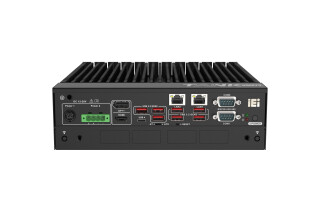Over-the-Air Update Strategies for Raspberry Pi-Based Embedded Systems
September 22, 2025
Blog

Embedded Linux systems built on Raspberry Pi platforms require reliable software update mechanisms to maintain security, functionality, and performance throughout their operational lifecycle. This article examines the technical considerations for implementing over-the-air (OTA) update strategies in Raspberry Pi-based embedded systems, comparing system-level and application-level update approaches.
The analysis addresses the fundamental challenge of maintaining device fleet integrity while balancing storage requirements, network bandwidth utilization, and update reliability across distributed IoT deployments.
Operating System Selection for Embedded Linux Development
In embedded Linux development, engineers face two primary approaches for operating system selection. One approach is custom distribution building, utilizing tools such as Yocto or Buildroot to create tailored system images optimized for specific hardware and application requirements. Alternatively, binary distributions offer pre-compiled packages and system images, with Debian and its derivatives serving as popular foundations for rapid prototyping and development.
The Raspberry Pi Foundation provides a Debian-based binary Linux distribution optimized explicitly for Raspberry Pi hardware variants. This approach proves particularly suitable for development teams working on small-scale IoT projects, where the Raspberry Pi 4 serves as a cost-effective platform for initial system integration and OTA update implementation testing.
OTA Update Methodologies
Throughout the product development lifecycle, embedded systems require software updates to address security vulnerabilities, implement bug fixes, and deploy feature enhancements. OTA update mechanisms enable remote software deployment across distributed device fleets without requiring physical access to individual units.
System-Level Updates
System updates target low-level components, including the bootloader, kernel, and root filesystem partitions. This approach updates the entire operating system partition, encompassing all software components regardless of whether individual files are modified.
The technical implementation typically employs dual partition schemes where the inactive partition receives the update while the active partition continues normal operation. Upon successful update verification, the system switches to the updated partition, providing inherent rollback capability if the new software fails to function correctly.
Advantages:
- Atomic update operations ensure a consistent system state
- Built-in redundancy prevents device failure during the update process
- Simplifies dependency management across the software stack
- Guaranteed rollback capability maintains system availability
Technical Limitations:
- Increased storage requirements for dual partition implementation
- Higher bandwidth utilization for complete partition transfers
- Extended update duration for large system images (typically hundreds of megabytes)
- Cellular data cost implications for bandwidth-constrained deployments
Application-Level Updates
Application updates target specific software components within the existing system framework. This granular approach updates individual packages, configuration files, container images, or application binaries without modifying the underlying operating system infrastructure.
The technical implementation leverages package management systems or container orchestration platforms to deploy incremental changes to targeted software components. Update size correlates directly with the scope of modifications, enabling efficient bandwidth utilization for minor software changes.
Advantages:
- Minimal bandwidth requirements for incremental updates
- Reduced update duration for targeted modifications
- Lower cellular data costs for bandwidth-constrained environments
- Support for frequent update cycles
Technical Limitations:
- Increased risk of system inconsistency during failed updates
- Complex dependency management across software stack versions
- Potential for version drift across the device fleet over time
- Limited rollback capability compared to system-level approaches
Implementation Considerations
The selection between system-level and application-level update strategies depends on specific deployment requirements, network infrastructure constraints, and acceptable risk tolerance for each embedded system implementation.
Critical factors include:
- Available storage capacity for dual partition schemes
- Network bandwidth limitations and associated costs
- Required update frequency and typical modification scope
- Acceptable downtime tolerance during update operations
- Regulatory compliance requirements for system integrity
Technical Implementation Framework
Modern OTA update frameworks provide client-server architectures supporting both update methodologies. The client component integrates with the target operating system to manage update acquisition, verification, and installation processes. Server-side components handle update package generation, distribution management, and device fleet monitoring.
Integration approaches vary based on the chosen Linux distribution and hardware platform. For Raspberry Pi implementations, client integration typically occurs at the system image level, with support extending across Raspberry Pi 3 Model B, B+, and Raspberry Pi 4 Model B variants.
The implementation workflow encompasses device preparation, server configuration, update package creation, and deployment management through secure communication channels with cryptographic verification of update integrity.
Advanced Device Management Capabilities
Beyond OTA software updates, comprehensive device management platforms provide additional capabilities, including remote terminal access, device monitoring, and configuration management. These features enable expanded fleet management functionality while maintaining the foundational OTA update infrastructure.
Open source implementations of advanced features support customization and integration with existing development workflows, providing scalable solutions for diverse embedded system deployments.
Conclusion
OTA update implementation for Raspberry Pi-based embedded systems requires careful consideration of technical trade-offs between update reliability, bandwidth efficiency, and system complexity. System-level updates provide maximum reliability at the cost of increased resource requirements, while application-level updates optimize bandwidth utilization with corresponding increases in implementation complexity. The optimal approach depends on specific deployment constraints and operational requirements for each embedded system implementation.





